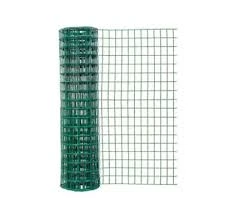10 月 . 05, 2024 16:06 Back to list
gabions
The Role of Gabions in Modern Engineering and Landscape Design
Gabions, derived from the Italian word gabbione, meaning big cage, are versatile structures made of rectangular wire mesh filled with a variety of materials, predominantly stones. Originating in the 19th century, these ingenious constructions have found their place in civil engineering, environmental management, and landscape design. Their functionality, aesthetic appeal, and environmental benefits have solidified gabions as a favored choice in numerous projects worldwide.
One of the most prominent uses of gabions is in erosion control. Along riverbanks, coastlines, and hillside slopes, erosion poses significant threats to both natural habitats and human infrastructure. Gabions act as robust barriers that absorb and deflect the energy from waves or flowing water. By preventing soil washout, they help maintain the integrity of the landscape while also promoting biodiversity by creating stable habitats for various species.
In addition to erosion control, gabions are widely used for retaining walls. These structures are crucial in managing changes in elevation and preventing landslides. Gabions allow for natural drainage, which reduces water pressure behind them, minimizing the risk of failure. Moreover, their flexible design accommodates ground movement better than traditional concrete walls, making them a durable solution for challenging terrains.
Gabions also find utility in urban design. As cities grapple with increasing population density and the consequent demand for sustainable infrastructure, gabions offer an eco-friendly alternative. They can be integrated into parks, sound barriers, or decorative features along pathways, blending seamlessly with their surroundings. By using natural stone or recycled materials within the gabions, designers can create visually appealing solutions that enhance the green aesthetic of urban spaces.
gabions

Furthermore, gabions contribute positively to the environment. Their permeable nature allows for water infiltration, reducing stormwater runoff and promoting groundwater recharge. This is particularly crucial in urban areas prone to flooding and waterlogging. By incorporating gabions into landscape architecture, cities can enhance their resilience to climate change and extreme weather events.
There is also an increasing interest in the creative uses of gabions in art and architecture. Designers and artists experiment with various forms and fillings, turning gabions into striking installations or functional furniture. This trend not only showcases the artistic potential of gabions but also emphasizes the importance of sustainable materials in modern design.
However, the application of gabions is not without challenges. They require proper design and maintenance to ensure longevity and stability. Factors such as the choice of materials, filling techniques, and environmental conditions must be carefully considered to avoid common issues like rusting of the wire mesh or erosion of the filled materials. Regular maintenance checks are necessary to address any degradation that may occur over time.
In conclusion, gabions are a multifaceted tool in the realms of civil engineering, environmental sustainability, and landscape design. Their ability to effectively manage erosion, support infrastructure stability, and enhance urban aesthetics makes them an invaluable asset in contemporary construction. As we move towards a more sustainable future, the innovative use of gabions will likely continue to grow, bridging the gap between functionality and environmental consciousness. Their adaptability and effectiveness serve as a testament to the progress we can achieve when we prioritize harmony with the natural world in our engineering and design practices.
-
Secure Your Roof with Quality Roofing Nails
NewsNov.04,2024
-
Secure Your Property with Quality Field Fencing
NewsNov.04,2024
-
Enhance Your Space with Quality Mesh Fencing
NewsNov.04,2024
-
Discover the Versatility of Iron Wire for Your Projects
NewsNov.04,2024
-
Discover the Versatility of Common Nails for Your Projects
NewsNov.04,2024
-
Discover Quality Hydraulic Fittings for Your Applications
NewsNov.04,2024









